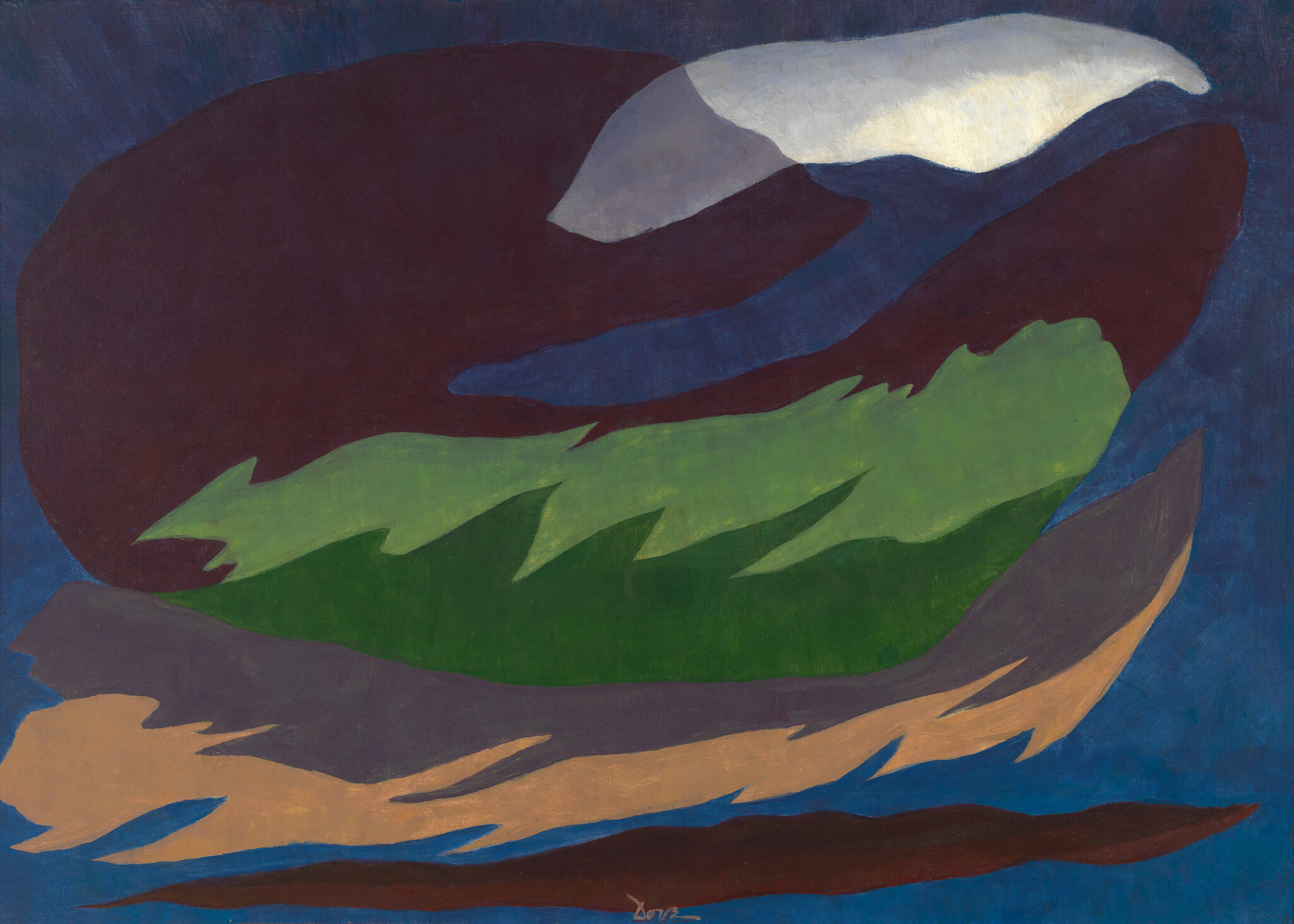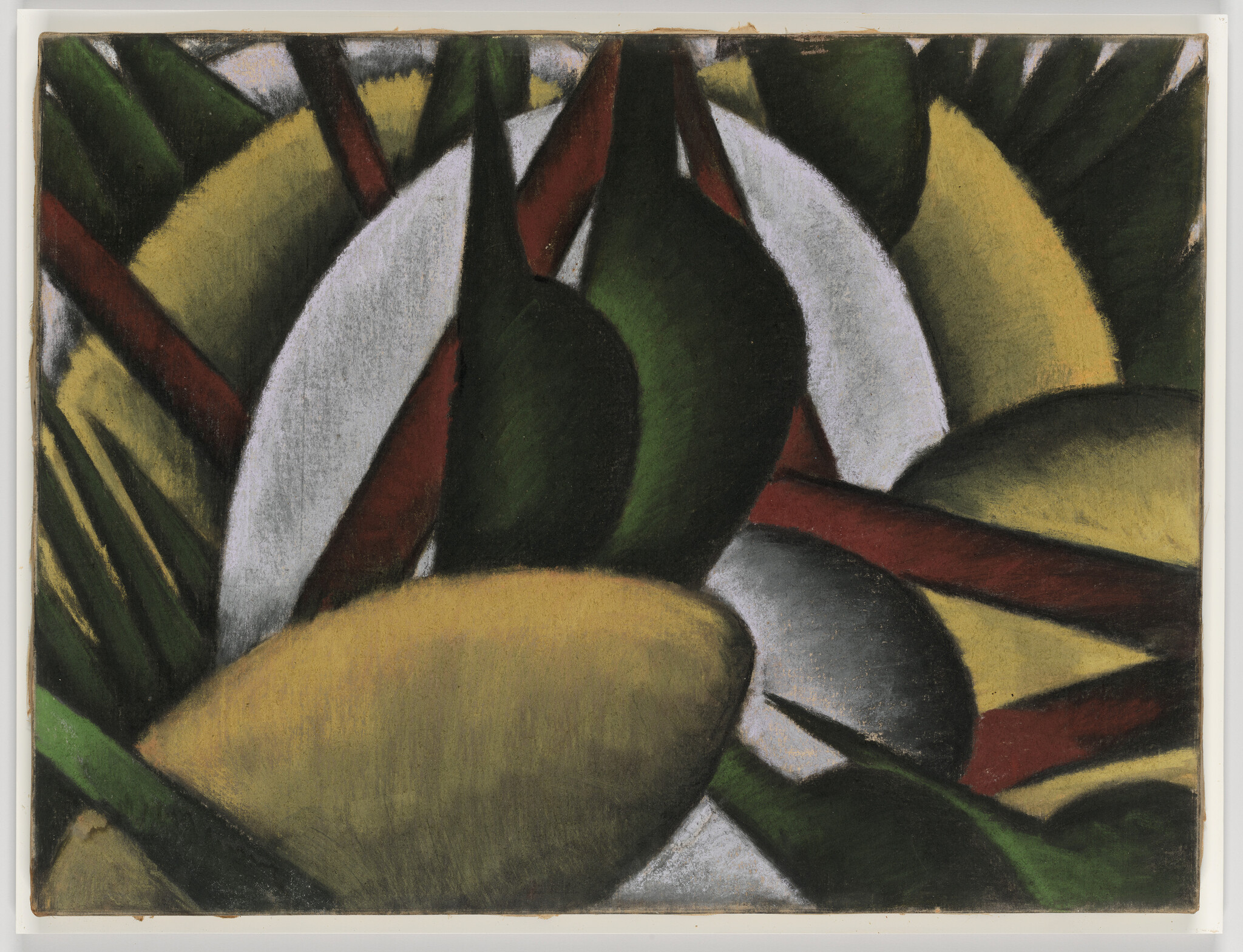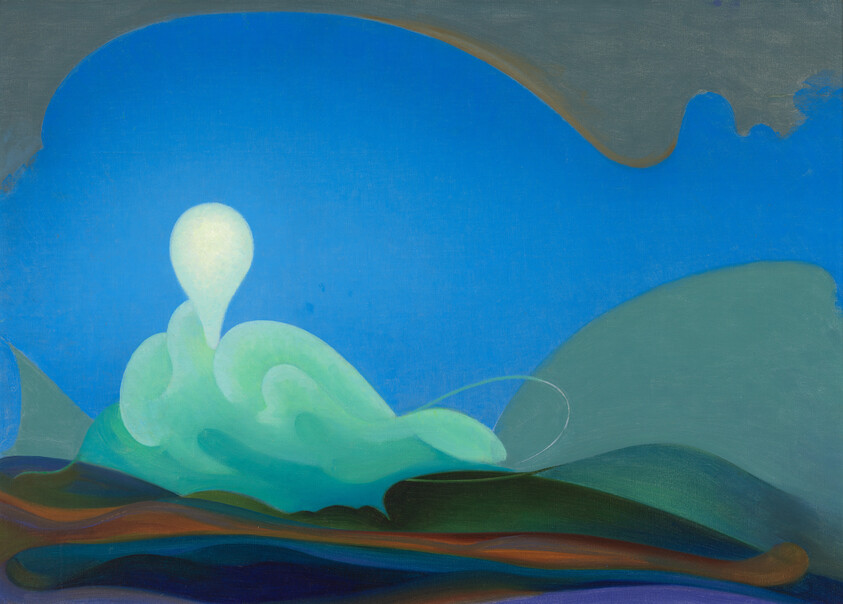Arthur Dove, Plant Forms
Apr 18, 2022
0:00
Arthur Dove, Plant Forms
0:00
Narrator: In 1912, Arthur Dove exhibited a series of pastel drawings—including this one—at Alfred Stieglitz’s 291 Gallery. In doing so, he became the first American artist to publicly embrace abstraction.
Barbara Haskell: Dove, like a lot of the artists within that circle, looked to nature forms as an antidote to the mechanized, kind of scientific basis that was in everyday life.
Narrator: Curator Barbara Haskell.
Barbara Haskell: There had been a lot of discoveries at the turn of the century—quantum physics, Einstein's theory of relativity, Freud's theory of the unconscious—all of those things that were challenging the idea that what we see is the true reality. Dove was one of those artists who looked at everyday life and didn't want to imitate it. He said, ”I would rather look at nature than imitate it,” and he began the search for the more elemental underlying forces, the kind of vital energies of nature. It was nature that was his subject—he saw it as an American idea, almost a transcendental idea, that through nature individuals can reach some sense of understanding wisdom, connection to the world. And those swelling forms that he introduced in Plant Forms, in the pastel in the Whitney’s collection, he would continue to redefine and rework throughout his entire career.



